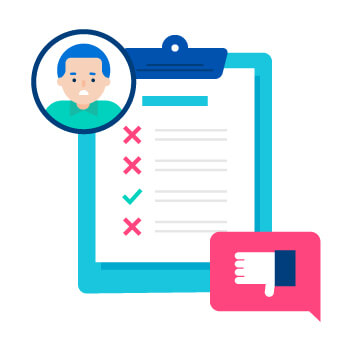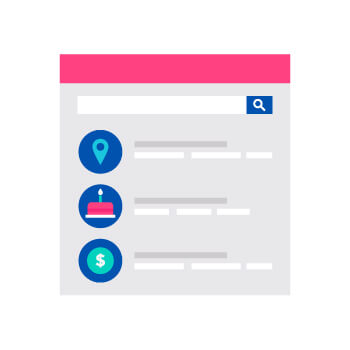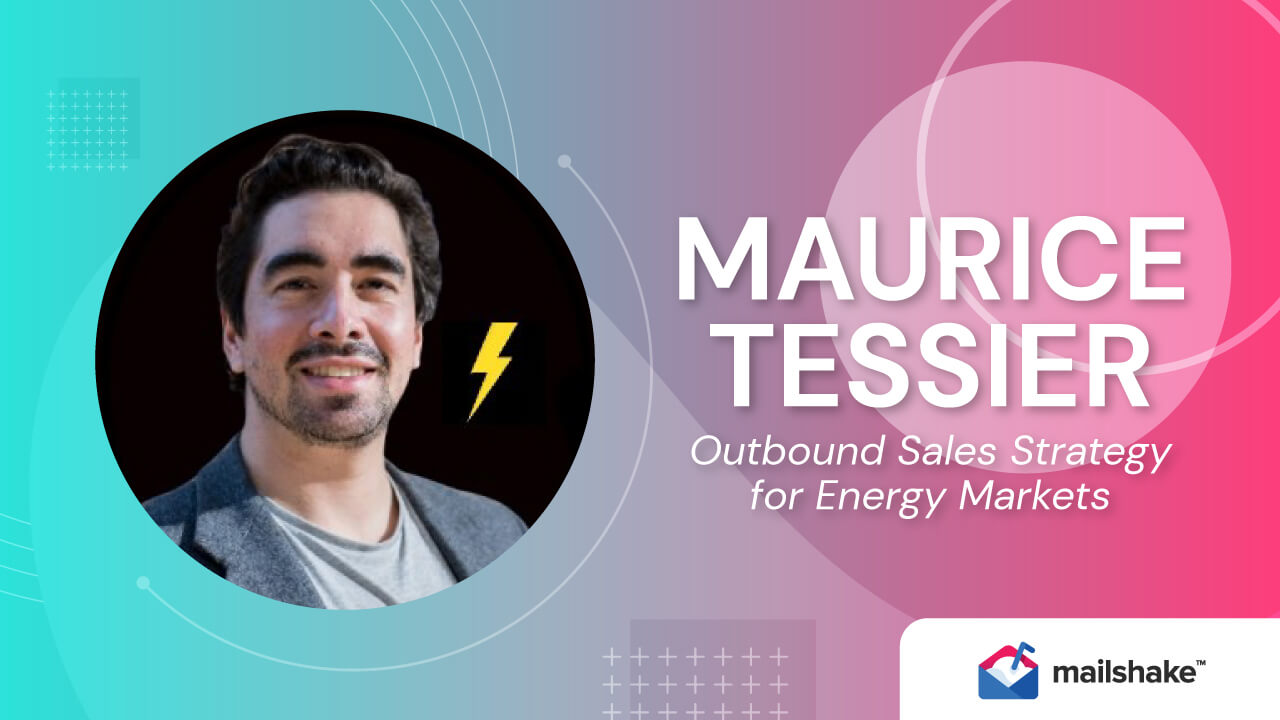How to Qualify Sales Leads and Sales Qualifying Questions to Ask

Contents
One of the main hurdles faced by B2B sales professionals is distinguishing between a lead and a viable prospect (a lead that has real potential to become a customer). It is crucial to understand that not every person you engage with will align well with your product or service. Therefore, effective salespeople must swiftly identify this disparity.
As you make your discovery calls, you will encounter a critical decision point with each prospect: either continue nurturing the relationship or gracefully disengage. Failing to qualify your prospect before proceeding can lead to a waste of time.
15 Sales Qualifying Questions to Ask in 2024
Here are 15 sales qualifying questions that can help you figure out early on who deserves your time and effort, and why they work.
1. “How Did You Hear About Us?”
It’s a simple question that sounds more like a formality than a sales qualifier, but you can actually tell a lot about a prospect’s potential to buy based on how they found you.
For starters, their answer tells you the lead source, such as a Facebook ad, referral, or webinar. Whatever their answer, consider the quality of the source itself and, if possible, the source’s history of delivering qualified sales prospects. For example, someone who reached out based on a referral is more likely to convert than someone who clicked on a search ad.
Why it works: The lead source may indicate how well they know your brand, or how familiar they are with your products or services. Someone who attended a webinar knows at least a little something about what your company does, but someone who clicked on a Google ad may have no clue what makes you special.
Use the lead source to figure out the best way to move the conversation forward.
2. “Are You the Decision-Maker?”
Point blank, if the prospect can’t make the decision to buy from you, what’s the point of spending time trying to sell them?
In many cases, company leaders will delegate an assistant to start exploring options and collecting information. But if you can’t speak with the decision-maker themselves, they won’t get the full impact of what you shared with their assistant. And if you’re passed on to a decision-maker after speaking to an assistant, you’ll essentially be going through your entire sales process twice for the same company.
If you do speak with the decision-maker, keep in mind that there might be more than one. The good news is that 90% of the time, salespeople will only need to convince one person – the dominant influencer.
Why it works: In case you’ll need to convince multiple people, this question will help you find out who else will be involved in the decision (and their roles) in advance. It will give you a better idea of the timeframe to expect, and it will help you determine the most effective way to approach the sales process.
3. “What Problem Are You Trying to Solve?”
Change is hard, and only tough business problems will create the impetus and desire for change.
Asking about the problems prospects are trying to solve can help them dive deeper to identify what’s currently not working. Ask them why they want or need to do something about the issue, and what pain it’s causing them.
Why it works: Establishing pain is the catalyst for action. The prospect will either be feeling pain from a known issue, or they’ll experience it when you uncover an issue they didn’t realize they had.
It’s essential to maximize this pain early in the process before delving into other questions so they’ll feel encouraged and empowered to do something about it.
4. “Why Are You Solving This Problem Now?”
Something has prompted the prospect to search for a solution. Maybe their old vendor went out of business, or perhaps they stumbled upon your webinar by accident and uncovered a problem they didn’t know they had.
Whatever the case, it’s important to understand why they’re looking at solutions now versus any other time. Their answer tells you what specifically is driving them to act.
Perhaps a vendor is no longer meeting their needs. While they know they have a need for a particular product or solution, they want to get it from a vendor that can better serve them. Major shake-ups or changes within a company can also provide an incentive to act.
Why it works: Companies that emphasize the now aspect of their decision are more qualified for sales than those who don’t feel the urgency to make a decision within a certain timeframe. If there’s nothing forcing their hand, they may need more education and nurturing to get them into a buying mindset.
5. “What Have You Tried in the Past?”
Has your prospect tried to solve their problem before? If so, you don’t want to recommend something they’ve already tried, especially if it didn’t work.
Why it works: It’s important for the prospect to come to their own conclusions about what didn’t work (and why) so they’ll be more open to hearing about your solution and why it’s different. Start digging into their past attempts to fix their problem and the weak points these solutions left behind.
6. “Is Doing Nothing an Option?”
Some companies feel pressured to make a decision. They know that if they don’t fill a need, it could have negative effects on the company, its customers, its employees, or its profits.
However, not all problems need solutions. If there’s no foreseeable consequence for not making a decision, the company may not feel the pressing need to act – at least, not anytime soon. Since they’re not facing any negative consequences for inaction, they may be reluctant to change, since change can be difficult and complicated.
Why it works: Their answer to this question can give you valuable insight into their mindset. If doing nothing is a viable option, you can either disqualify the prospect, or work to convince them that not acting isn’t an option (if this is truly the case).
7. “What Made You Interested in Us/Our Brand?”
This question is similar to “How did you hear about us?” but it reveals a few additional details that could spur conversions.
For some buyers, brand is king. A brand says a lot about product quality, the company’s values and mission, and what customers can expect. Studies show that 80% of customers are willing to pay more for a better customer experience, so prospects who love your brand may be less likely to let price get in the way of doing business.
If a prospect isn’t familiar with your brand or company, you should make it a priority to change that. They’re not just buying a product, they’re buying into your company as a whole. They need to know what truly makes you a better choice if they’re comparing similar products from different providers.
Why it works: If the prospect mentions something about a sale, your brand might not carry as much weight with them. They could be looking for something that’s just good enough to do the job, which could turn into a price war between vendors.
However, if they mention they’ve heard good things about your brand or were recommended by one of your customers, the scales may tip in your favor when it comes time for them to make a decision.
8. “Why Weren’t You Happy With Your Last Vendor?”
If your prospect already has a provider and they’re thinking about switching, don’t be afraid to ask why. Something is driving the change, and if you can show that switching to your product or service will give them better results, you stand a much better chance of moving forward with the prospect.
Why it works: This question can help you avoid some of the things they disliked about their last vendor. For example, if their previous provider failed to provide timely follow-up, then you’ll know to make an extra effort to stay in touch.
As an added bonus, this also helps you discover potential weak points in the competition. If you can see where they fall short, you can better highlight your strengths and show what makes you different.
9. “What Are Your Top Priorities in a Solution?”
Companies look for solutions for different reasons. Some companies want to save money, so they start looking for alternatives to their current processes. Others aren’t getting the results they want, so they’re looking for a product that will help them improve the quality of their work, even if it’s not cheap.
As a sales rep, never assume that all companies have the same priorities. Ask your prospect what their number-one goal is – it might be to save money, to be more productive, or to produce a higher caliber of work. You can’t tackle all their problems at once, so focus on what’s most important to them and work from there.
Why it works: This question helps you present an offering that aligns with their main goals. It can also reveal a lot about their timeline, sense of urgency, and authentic desire to solve the problem.
The answer alone may not be enough to qualify or disqualify your prospect, but it can lead to additional talking points that will uncover more about their needs and goals.
10. “What’s Your Budget?”
Many sales decisions come down to money. Even if you have a great product that will benefit your prospect, they may not be able to afford it.
Not surprisingly, price is the number-one talking point in the first sales call, with nearly 60% of buyers wanting to know what a particular solution will cost them. This is good news for sales reps, too, since it helps you qualify your prospects on budget early in the process.
Why it works: Bringing money into the conversation too early could send the wrong signal that all you care about is making a sale. But asking about their budgets (not your pricing) can help you understand more about their needs and tailor your solutions to meet them.
11. “What’s the Best Way to Communicate Moving Forward?”
Not everyone prefers the same communication channels. Some prospects are chained to their office line, while others are out in the field and rarely pop into the office.
Save yourself time by knowing from the start how they like to be contacted. This gives you the best chance of making connections when it matters most.
It may also hint at their interest level. For example, someone who trusts you with their direct cell phone line is likely highly interested in hearing from you. If they offer up an email address, they may still be interested, but you risk the chance of getting lost in their inbox. If this is the case, try empathizing with the fact that they get 100 emails a day and ask if there’s something you can add to the subject line that will stand out to them.
Why it works: The goal here is to set expectations for communications moving forward. This lets the prospect know you value their time as well as your own and want the best chance of connecting when it counts.
12. “What Can Prevent Us From Working Together?”
Knowing the prospect’s deal-breakers up front tells you what they’re not looking for or what they can’t accommodate. There are a lot of factors that can collapse a deal (some of which may be entirely out of your control), but if you can establish early on that you’re not a good fit, it will save you both lots of time and effort.
Why it works: The lead-to-deal conversion rate is a mere 0.08%, or roughly one deal out of every 128 leads, so asking this question can cut to the chase and help you discover what could prevent you from doing business together. If you can’t avoid their deal-breakers, then it’s usually prudent to disqualify them.
13. “How Quickly Are You Hoping to See Results?”
Making the sale is just the first step. Once the customer makes the purchase, implementation, on-boarding, and ramp-up time can affect how quickly the problem is actually solved. If they need to see results in a few weeks, then they may need to make a decision right away. However, if they don’t have a strict timeline, they may not be ready to make a purchase.
Why it works: Their answer gives you an idea of how quickly you need to respond. You can use their timeline to help them determine when they need to make a decision, and set realistic expectations for implementation of the solution.
14. “What Other Solutions Are You Evaluating?”
It helps to know the outside forces you’re up against that could sway the prospect’s decision. If the prospect is considering some of your competitors, you may be able to take control of the conversation and steer them to your side.
Why it works: In some cases, a prospect will have already decided on another vendor, then evaluate your offering to see if they can get a better price. They may have no intention of working with you, but will use your quote as leverage in negotiating with the other vendor.
It’s your job to find out where you are in their process — and their priority list — and see if their interest in you is truly authentic.
15. “When Do You Plan to Make a Decision?”
The most qualified prospects are those who are serious about making a decision, either with your company or someone else’s. They’re working toward a solution and likely have a timeline in place for when they need to make a purchase and implement their choice. It also shows their level of commitment to finding a solution.
And, the more urgent the timeline, the more time you need to spend with them.
Why it works: Someone who needs to make a choice in the next two weeks will need you to be more proactive with them than someone who has a few months to make a choice. There’s not as much time to nurture your leads, which means you’ll need to focus on adding value and impact to every touchpoint.
Find out where the prospect is in their exploration and if they have a particular date in mind for making a decision. If you can get a firm date, you can work backward when planning demos, following up, and presenting an offer.
A Step-by-Step Process for Qualifying Sales Leads
The best salespeople understand that prospecting is only one side of the coin. In reality, identifying promising leads earlier in the sales process – and then converting them into sales – should also be a top priority. Too often, it just isn’t.
That’s why you need a tried-and-trusted process for qualifying your sales leads. Here’s how to do it
1. Create a Crystal-Clear Buyer Profile
 Ever tried your hand at the whole online dating scene?
Ever tried your hand at the whole online dating scene?
Most online dating services ask you to share a few preferences. On a basic level, they want to know the area in which you’re looking to meet people. They might also dig a little deeper – what shared interests are you looking for? What qualities do you find most attractive in a partner?
In other words, they build up a profile of the sort of person you’re hoping to meet. While that profile might not result in you meeting the love of your life, at an absolute minimum it makes it more likely that you’ll at least be able to hold a decent conversation over dinner and drinks.
Sales is no different. If you don’t take the time to understand what you’re looking for in a buyer, how can you realistically expect to find them? Start by asking yourself the following:
- What specific niche does my buyer operate in?
- How senior are they?
- How big is their organization?
- Where are they located?
- How much do they understand about my service?
- What is their budget?
Once you know exactly who you’re looking for, it becomes far simpler to qualify leads that meet your profile – and to discard those that don’t.
2. Understand Their Need
Customer need should come first. It should trump all other considerations. Without it, there’s no reason to continue with a prospect.
Stop wasting everyone’s time. Don’t be a solution in search of a problem.
If they have no need for your product or service, full stop – or if it can’t provide their desired results, do not pass Go. Do not collect $200.
But if you identify a need and results that you can deliver, you’ve got a reason to continue talking.
The need is everything, so establishing it with a prospect is your top priority. It’s the only reason you’re talking with them. You’re not selling. You’re guiding them through to establish what could be better, faster, more streamlined, and so on.
So, how do we identify need? We ask questions. We listen. We ask follow-up questions. We listen some more.
The best sales reps understand the importance of asking the right kinds of questions, be they rapport-building, problem, solution, probing, or otherwise. They know not to ask simple ‘yes/no’ questions, relying on open-ended and thoughtful ones that generate real conversation.
A need may be a frustration with a product or workflow, it may be a short or long-term goal, or it may be a problem they currently have.
Good questions to ask to identify these problems might include:
- What frustrates you most about X?
- What problems are draining the most resources – time, energy, money – at the moment?
- How much is X costing you?
- What is keeping you from hitting your goals/quotas?
Get them talking about the obstacles, issues, and problems keeping them from being better: more revenue, increased productivity and efficiency, faster funnels, greater reach, more exposure, higher retention, and so on.
3. Assess the Opportunity
Finding a need does not guarantee a sale.
Essentially, at this stage you need to determine whether the improvement delivered by your product – what it does for them – justifies the expense (money, time, resources). Maybe it does, maybe it doesn’t.
Sean Burke, Chief Client Officer at Prometric, emphasized that sales isn’t about selling a product of service: “Sales is about aligning with your clients to solve business problems. So few people do this. Because of that, millions of dollars are wasted on purchases that fail to deliver their intended results.”
In essence, does their need justify the means?
If you can help them save X number of dollars, or double their pipeline, or increase retention by 25%, the answer is probably ‘yes’.
To that end, work with them at this stage. Crunch some numbers. Compare and contrast. Provide them with the hard data they need to make an informed, smart decision.
Need and opportunity are crucial not only to making the sale, but to developing an ongoing partnership. If they tell you they’d love to automate this or eliminate that, but have no idea why or how it will help them reach specific goals, they may end up very unsatisfied.
Instead, help them assess the opportunity:
- Is there a clear critical business issue (CBI)?
- Is there a clear solution to the problem?
- Is your product demonstrably effective as a solution?
- Does the solution provide value? A decent return-on-investment?
4. Not Scoring Your Leads? Get Started!
So you’ve drawn up a buyer profile. That’s a good start – but it’s only a start.
Sadly for salespeople, not everyone who meets your profile will actually be in a position to buy right now. They might not have the budget. It might not be a priority at the moment. Or they might just have bought from one of your competitors.
That’s why the next step in the process is to start scoring your leads.
Lead scoring is about assessing the quality of a prospect based on the way they engage with your brand. After all, a lead who has clicked on your latest blog post is giving off fewer buying signals than someone who has read every one of your case studies and followed your business on LinkedIn and Twitter.
The more a lead interacts with your content and website, the higher their score. Once they reach a certain level, it’s time to give them a call.
5. Filter Out the Time-Wasters
 While the first two steps will help you to identify the prospects who are most likely to buy from you, that can still leave you with a lot of white noise to cut through. You want to focus your energy on high-priority leads, but you’ve got a pipeline packed with dozens of potential buyers. There are only so many hours in the day. What do you do?
While the first two steps will help you to identify the prospects who are most likely to buy from you, that can still leave you with a lot of white noise to cut through. You want to focus your energy on high-priority leads, but you’ve got a pipeline packed with dozens of potential buyers. There are only so many hours in the day. What do you do?
Looking out for red flags can save you a lot of wasted time down the line.
Your specific red flags will naturally vary based on what your business does and the scale at which it operates. But a few common examples include:
- A lack of engagement with your content
- Partially (or almost entirely) fake contact details
- A location that you would struggle – or be completely unable – to serve
- The wrong company size
- An industry where your solution isn’t that strong
6. Check Your CRM
In some professions, customers might be flattered to be served by multiple people. It’s never a bad thing when you’re in a bar or restaurant and more than one server asks if you have enough drinks, right?
Sales is different. No one wants to deal with multiple salespeople from the same organization – especially if they’ve already opened a dialogue. Best case scenario, it’ll make you look disorganized. Worst case, it might annoy them so much that it costs your company the deal.
Fortunately, it only takes a minute to check your CRM and ensure that none of your sales team are currently speaking to anyone else at the target company – or, indeed, with the same lead you’re about to contact. If they are, make sure you pass that lead onto the right person for follow-up.
7. Review Their Website

This is such a simple step, but a staggering number of salespeople don’t bother with it. Or they do, but they don’t really understand what they’re looking for in the first place.
Just as a TV salesperson speaking to someone in a Patriots jersey will inevitably highlight how fantastic it is to watch football in ultra-HD and with full surround sound, you need to find your own “in.”
Let’s say you’re selling an email automation service. Does your prospect’s website already have an autoresponder set up? Does it appear to tie into their wider marketing funnel, or are there some potential leaks that your product could plug? Are there any other quick wins you can share to get the prospect onside?
A lead is never truly qualified until you’ve taken the time to properly understand their current situation.
8. Understand That Interest ≠ Intent
As salespeople, it’s all too easy to leap to conclusions.
We want more leads, so we sometimes see opportunity where none exists.
This is a bad habit. The sooner you cut it out, the sooner you’ll be able to focus your attention on the real opportunities.
The simplest way to do this? Ask the right questions at the right time (and the right time is almost always “as soon as possible”).
For instance, if your prospect tells you that they normally buy from one of your competitors but that they’re interested in seeing your information, ask them:
- What would make you decide to switch vendors?
- When did you last buy from your current provider?
- How many other companies have you bought from in the last six months?
As with many of the other steps in this process, it’s all about using your intuition – and as much information as you can gather – to separate the non-buyers from the red-hot leads.
9. Know Your Competition

If you don’t know who you’re up against, it’s much harder to craft a compelling message that ultimately persuades a prospect to buy from you, rather than someone else.
Don’t be afraid to ask who you’re competing against. Which similar vendors has your lead worked with in the past? How recently did they last work with them? Or are they evaluating your solution against taking things in house?
What do they love about their current setup? What do they hate?
And, most importantly, what criteria will they be using to ultimately make the decision about whether or not to buy from you? Is it about price, timeframe, features, or something else?
When you drill down to what they’re really interested in, and who else could be doing it for them, you’ll be in a much better position to sell your product in a way that resonates with your prospect.
10. Clarify Their Decision-Making Process
Once you’ve been through the other steps in this process, you should be left with a lead that’s almost qualified. But not completely. Unfortunately, a prospect can tick every other box, only for their decision-making process to let them down.
So why is this such a key factor? Think about it this way…
- If I’m selling a low-price, low-margin product, I probably can’t afford to attend a whole series of proposal meetings and pitches with different parties.
- On the flip side, if my product is complex and requires a lengthy lead time, it’s doubtful that I’ll be able to sell to a prospect who needs a solution right now.
Find out as much as you can about the decision-making process. How many stakeholders are involved? Do they work together, or are they based all over the world? And how long does it typically take them to make their mind up on a purchase?
This step is becoming increasingly important as corporate hierarchies get more complex, with no one person making decisions on their own.
11. Discuss Expected Outcomes
The final phase is to discuss the expected outcome and impact.
“This is a business conversation vs. a features and benefit discussion – it provides the measurable results that the client needs to justify their decision.” ~ Sean Burke
The key here is measurable results.
You’ll need to ultimately gather thoughts and feedback from the team you identified, but for now, broach the subject with your initial contact.
Ask:
- How will they measure results? How do they do that now? Will it change with implementation?
- What’s the timeline?
- How will it unfold by week, month, quarter, or year?
- What’s the impact on your business if they do nothing?
Nail down the effect, and you provide them with the justification they need to move forward.
Final Thoughts
You don’t have to go through all 15 questions to qualify a prospect. The answer to one question should guide you to the next, until you can qualify or disqualify your prospect with confidence.
If you do find that you and your lead aren’t a good match for each other, think of it as a positive – if you get an early ‘no’, you can start moving closer to your next ‘yes’.





